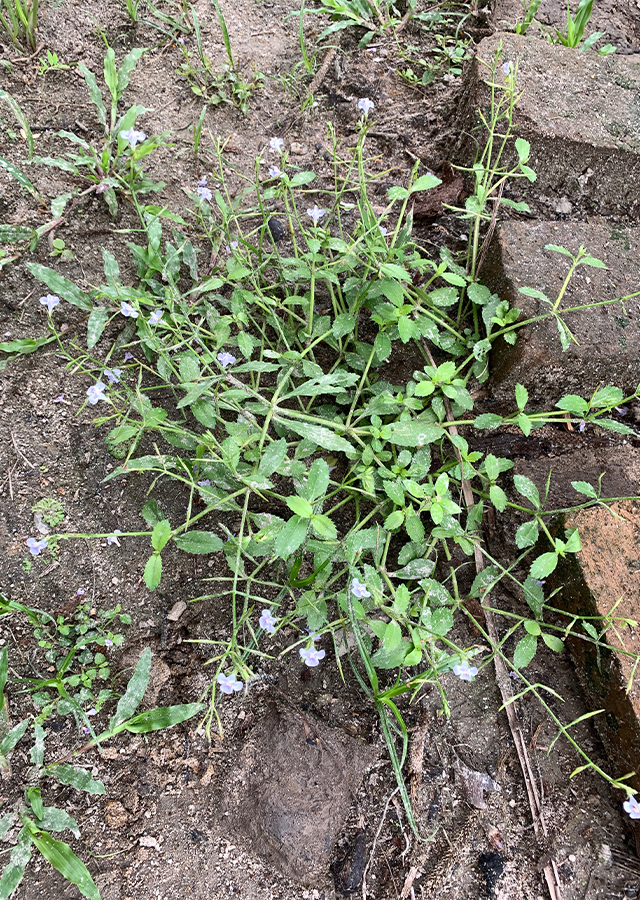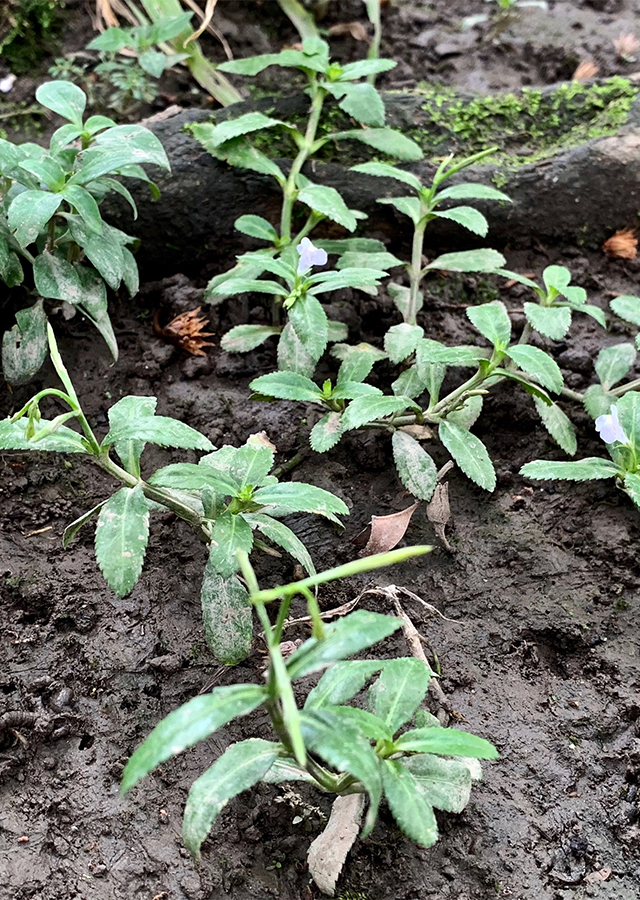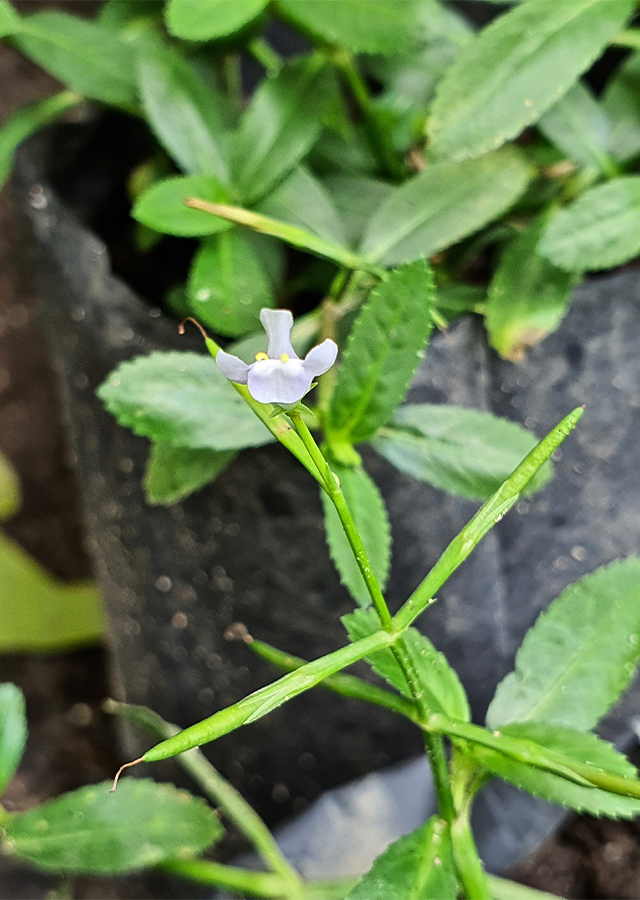Sparrow False Pimpernel
Bonnaya antipoda (L.) Druce
Linderniaceae
Location in our garden
Beneficial Weed



Synonym
Ruellia antipoda L.
Ruellia serrata Thunb.
Cyrtandra capsularis Blanco
Habitus
Herbaceous. An annual, creeping herb, growing up to 40 cm long
Part Used
The Whole Plant
Growing Requirements
Full Sunshine
Need Shade
Habitat
Wetland
Grassland
Overview
Native to Asia. It is now widely distributed in tropical and subtropical areas around the world (America, Caribbean, Africa, Asia, Australia, Pacific). The plant is classified as 'Least Concern' in the IUCN Red List of Threatened Species.
Vernacular Names
Ni hua mu cao (Chinese), Tumpangan ayer (Malaysia), Maak lin nam khaang (Thailand).
Agroecology
Found in rice fields and wet grassland below elevations of 1,700 m. Sunny or shaded, moist or swampy localities, also near villages and in open forest or ditches, on arable land and irrigated or rain fed rice fields.
Morphology
- Roots - fibrous, fascicled.
- Stems - suberect or prostrate basally and rooting from lower nodes then ascending, many branched, channeled, glabrous.
- Leaves - leaf blade oblong, oblong-lanceolate, oblong-oblanceolate, or linear-lanceolate, 0.8-4 X 0.6-2 cm, glabrous, base cuneate and decurrent, margin obscurely to sharply serrate or subentire, apex acute to rounded.
- Flowers - bracts subulate, Calyx lobed to base, lobes lanceolate, hispidulous along midrib and edges. Corolla purple, purplish white, or white, to 1 cm, tube to 7 mm, lower lip 3-lobed, lobes subequal, upper lip 2-lobed. Fertile stamens 2, posterior, filaments unapendaged. Reduced stamens 2, anterior, filaments slightly curved, glandular. Stigma lamellate.
- Fruits - cylindric, 2 X or more as long as persistent calyx.
- Seeds - brown, irregularly triangular-ovoid; seed coat reticulate.
Cultivation
Generative propagation is by seed and multiplies vegetatively by fragmentation of stems that root very easily.
Chemical Constituents
Flavonoid, phenolic compound, tannins, ethyl acetate, amino acid, β-sitosterol, stigmasterol.
Traditional Medicinal Uses
- The whole plant is considered emmenagogue.
- The roots and leaves is used as an anthelmintic.
- In Malaysia, the root of Lindernia antipoda with the addition of an astringent is used to cure diarrhea. A decoction of roots and leaves is used as a dewormer.
- In Indonesia, the plant is part of a drug against vertigo.
- Decoction from the leaves is taken for abdominal pain.
- Leaf paste is applied for cut and wound healing.
- The leaves are used for the treatment of biliousness affections and dysentery; in poultices for sores, ringworm, and itches.
Part Used
Reference Sources
- Ho, Y. L., Huang, S. S., Deng, J. S., Lin, Y. H., Chang, Y. S., & Huang, G. J. (2012). In vitro antioxidant properties and total phenolic contents of wetland medicinal plants in Taiwan. Botanical studies, 53(1) 55-66.
- http://powo.science.kew.org/taxon/urn:lsid:ipni.org:names:799766-1
- http://tropical.theferns.info/viewtropical.php?id=Lindernia+antipoda
- https://uses.plantnet-project.org/en/Lindernia_antipoda_(PROSEA)
- https://www.natureinfo.com.bd/lindernia-antipoda/
